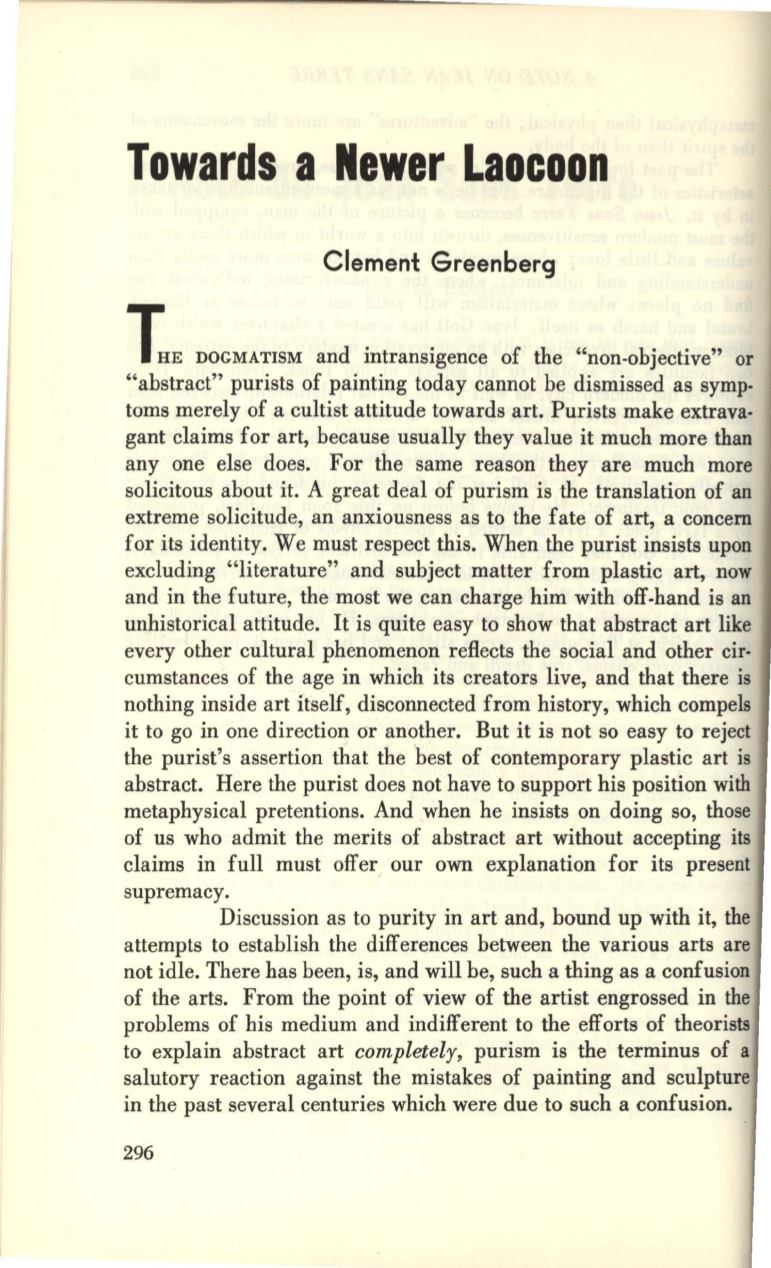
Towards a Newer Laocoon
Clement Greenberg
IE
DOGMATISM
and intransigence of the "non-objective" or
"abstract" purists of painting today cannot be dismissed as symp–
toms merely of a cultist attitude towards art. Purists make extrava–
gant claims for art, because usually they value it much more than
any one else does. For the same reason they are much more
solicitous about it. A great deal of purism is the translation of an
extreme solicitude, an anxiousness as to the fate of art, a concern
for its identity. We must respect this. When the purist insists upon
excluding "literature" and subject matter from plastic art, now
and in the future, the most we can charge him with off-hand is an
unhistorical attitude. It is quite easy to show that abstract art like
every other cultural phenomenon reflects the social and other cir–
cumstances of the age in which its creators live, and that there is
nothing inside art itself, disconnected from history, which compels
it to go in one direction or another. But it is not so easy to reject
the purist's assertion that the best of contemporary plastic art is
abstract. Here the purist does not have to support his position with
metaphysical pretentious. And when he insists on doing so, those
of us who admit the merits of abstract art without accepting its
claims in full must offer our own explanation for its present
supremacy.
Discussion as to purity in art and, bound up with it, the
attempts to establish the differences between the various arts are
not idle. There has been, is, and will be, such a thing as a confusion
of the arts. From the point of view of the artist engrossed in the
problems of his medium and indifferent to the efforts of theorists
to explain abstract art
completely,
purism is the terminus of a
salutary reaction against the mistakes of painting and sculpture
in the past several centuries which were due to such a confusion.
296


